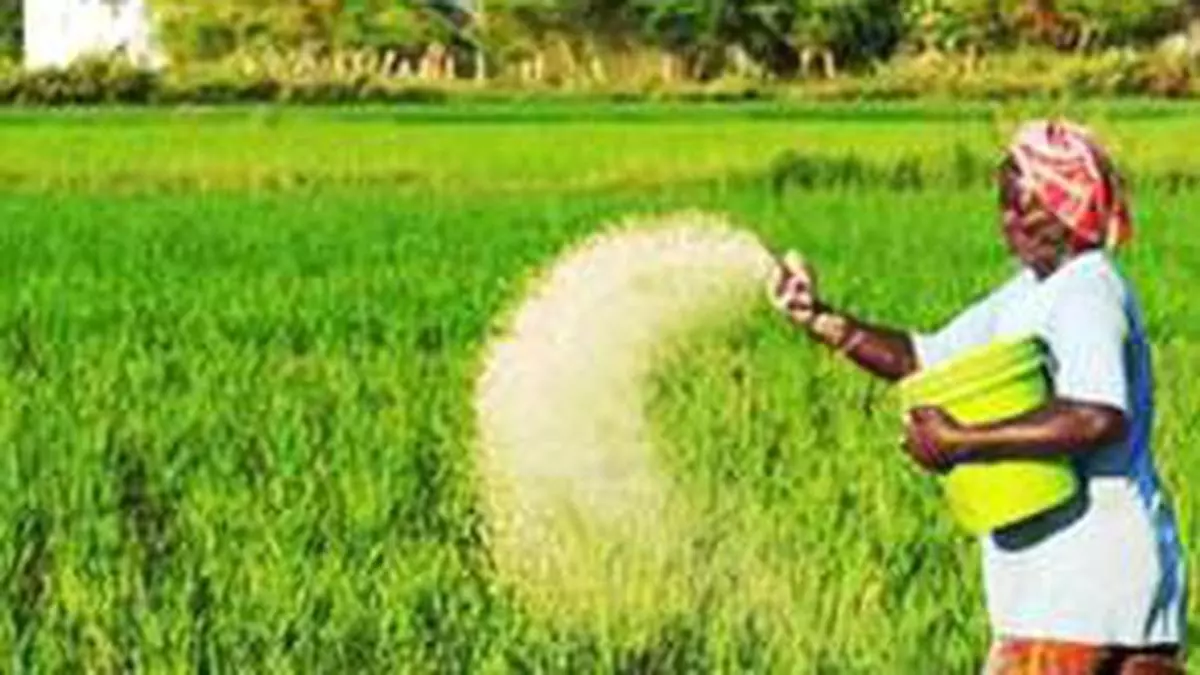Fertiliser sales rise 3% to 58 million tonnes in Apr-Feb of FY24
Sales of key fertilisers in the 11 months of the current fiscal up to February are up by 3 per cent at 57.57 million tonnes (mt) mainly on higher usage of DAP and complex varieties while urea consumption has been stagnant, according to official data. However, except MoP, imports of all other fertilisers were lower during April-February of 2023-24.
Recently while announcing the nutrient-based subsidy for the Kharif 2024 season, the government raised the subsidy for phosphorus, the key nutrient of DAP, to ₹28.72/kg from ₹20.82/kg, while keeping the financial assistance for other nutrients at same levels as they were in Rabi 2023-24 season.
According to the latest official data, overall consumption of urea until February 29 in the current fiscal increased by 0.3 per cent to 34.12 mt from 34.12 mt a year ago, whereas sales of all fertilisers put together increased a modest 2.8 per cent to 57.57 mt from 56 mt, mainly due to higher sales of complex and di-ammonium phosphate (DAP) fertilisers.
Nao-urea impact
The total sales of DAP surged 5 per cent to 10.64 mt during April-February from 10.14 mt year-ago, muriate of potash (MOP) was flat at 1.52 mt and complex increased by 9.6 per cent to 11.2 mt from 10.22 mt year-ago. Complex fertiliser is a combination of nitrogen (N), phosphorous (P), potash (K) and sulphur (S) nutrients.
In February, Fertiliser Minister Mansukh Mandaviya said India’s conventional urea consumption would likely to decline by 2.5 mt this fiscal on an increase in demand for nano liquid urea and the government’s efforts to discourage the use of chemicals. Urea consumption was 35.7 mt during FY23.
He said consumption of conventional urea has gone down in 344 districts, but sales of nano-urea has increased in 74 districts. He was hopeful that India would be self-sufficient in urea by 2025.
Import of urea, controlled by the government, was 6.67 mt during 11 months to February against 7.4 mt year-ago, a fall of 9.8 per cent. There was record import of urea at 9.83 mt during FY 2020-21.
Subsidy tops ₹1.2 lakh
Import of overall fertilisers also dropped 10.2 per cent to 16.05 mt from 17.87 mt year-ago, in which complex import declined 18 per cent at nearly 2 mt from 2.44 mt and DAP by 20.1 per cent to 5.31 mt from 6.65 mt. But, MOP import surged 48.6 per cent to 2.07 mt from 1.39 mt.
Production of all fertilisers was up by 4.5 per cent to 46.56 mt from 44.57 mt, which included urea at 28.91 mt (against 25.98 mt year-ago), DAP 4.07 mt (4.02 mt), Complex 8.86 mt (8.71 mt), SSP 4.13 mt (5.19 mt) and Ammonium Sulphate 0.58 mt (0.67 mt).
Meanwhile, urea subsidy has reached ₹1,20,609.74 crore, which is 93.8 per cent of Revised Estimate of Rs 1,28,594 crore. Potash and phosphorus subsidy were at ₹60,054.09 crore, which is 99.6 per cent of ₹60,300 crore allocated in Budget (Revised Estimate). The government has raised the Budgetary allocation for all the fertiliser subsidy from of ₹1.75-lakh crore in BE to ₹1.89-lakh crore in RE of FY24.
